York City’s near two-decade wait for new stadium finally coming to an end
In the end – emblematically for these last 12 months – it turned out the last hurrah at their home of 89 years had been and gone a fortnight earlier when a Covid-19 outbreak caused the postponement of last Tuesday’s planned game against Fylde.
Even the final phase of the story of the 8,500-seater LNER Community Stadium the Minstermen will share with York City Knights has dragged out. Gateshead were due there on Tuesday but an outbreak amongst the hosts means Curzon Ashton are now expected to be York City’s first opponents on January 30.
Advertisement
Hide AdAdvertisement
Hide AdWhen the new stadium was signed off before Christmas, fans were allowed at matches in Tier 2 York, but after squabbling over the lease and match-day arrangements pushed back the opening night, now they cannot.
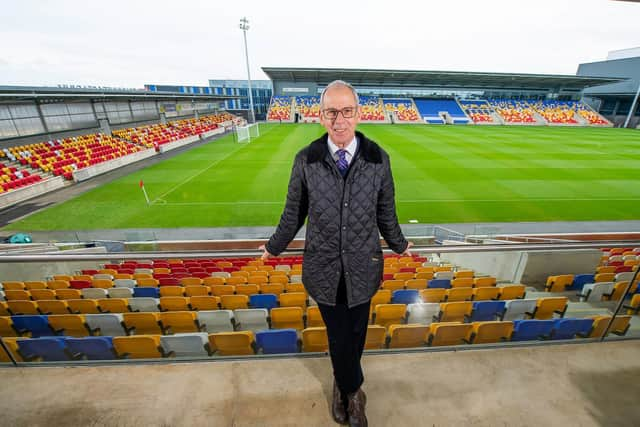

One thing we can finally say, though, is York City are moving, and Bootham will be replaced by housing. There will be sadness at no longer returning to a ground which holds happy memories courtesy of Keith Houchen, Ricky Sbragia, Gary Ford, the ‘Happy Wanderers’ and many more, but relief too. It has been an inordinately long time coming.
The Minstermen have suffered in limbo for nearly two decades. When then-chairman Douglas Craig agreed Bootham Crescent’s £4.5m sale in 2002, it had only hosted league football (plus plenty of other sports). Just four of the subsequent 16 seasons have been at that level, and York have dropped to English football’s sixth tier.
For chairman Jason McGill, on this ‘crusade’ since 2003, and director Ian McAndrew, whose involvement even pre-dates that, there will be one overriding emotion.
Advertisement
Hide AdAdvertisement
Hide Ad“It will be relief because for all the lovely memories at Bootham Crescent, it’s a 1932 stadium that’s falling down,” says McGill.
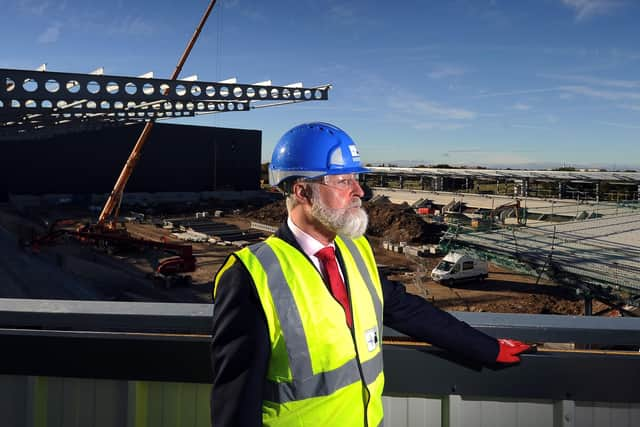

McAndrew expects “a mixture of elation and thinking, ‘Thank goodness we’re here’,” adding: “Bootham Crescent’s a sad place now because of the lack of resources towards its upkeep. There’s been no point because we were moving.”
In July 1999 Craig transferred York and its home since 1932 to Bootham Crescent Holdings. The club went into administration and was sold to former racing driver John Bachelor for £1 in 2002, whilst the ground was effectively sold to Persimmon Homes, who will now finally develop it. Batchelor dreamt of a 22,000 all-seater football, rugby league and motorsport stadium but with only a one-year lease, the football club was in jeopardy. Football League sides had to have at least 10 years’ tenure.
That was when chartered surveyor McAndrew became involved.
“I’d just moved to Harrison Developments,” he explains. “I knew the people at Bootham Crescent and said to John Bachelor we owned a piece of land at Clifton Moor which was ideal to put a stadium on if he could get planning permission. He said he knew nothing about property, could I join him? He seemed very plausible and had some good ideas so I said yes but it very soon became clear he wasn’t the man he said he was.”
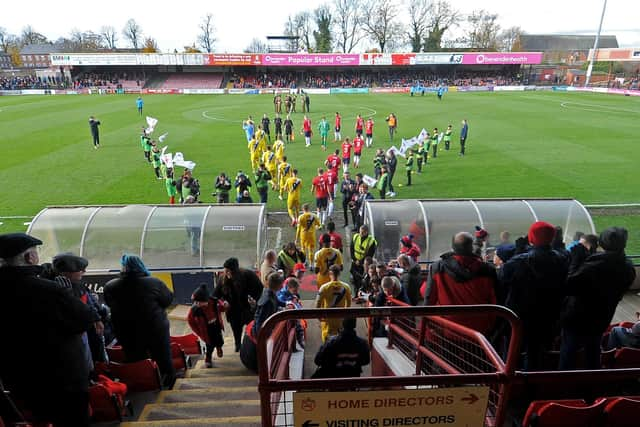

Advertisement
Hide AdAdvertisement
Hide AdYork City Supporters Trust, formed in February 2002, acquired the club from the administrator in 2003 after Batchelor, who died in 2010, ran up debts of £1.8m.
“I used to go as a small child – I sat in the Main Stand, I stood in the David Longhurst Stand, then moved to the Pop(ular) Stand,” says McGill. “I’m a little bit of a crusader and when the club was half-an-hour from liquidation I felt I was in a position to help. I made it my task in 2003 to buy the ground back. With fantastic help from the Football Foundation and their lending arm, the Football Stadium Improvement Fund (FSIF), it took me 18 months.
“The negotiations with Douglas Craig were difficult primarily because he had all the cards. I was praying every night for 18 months, thinking, ‘This bloke could pull the rug from under the football club.’ My wife put a pad by the bed because I’d wake up and think, ‘That’s how I’m going to get the Football Foundation to loan us the money!’
“We were one of the only clubs that hadn’t used the monies every Football League club was eligible for to improve their stadia after the Taylor Report. I don’t know why. The FSIF loaned us £2m on the proviso we had to move, when it would turn into a grant. FSIF money was supposed to be to improve spectator safety and facilities but I used it to buy our own ground back and give us breathing space.”
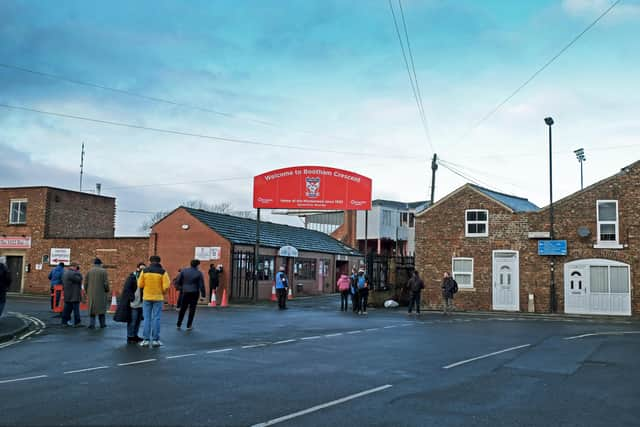

Advertisement
Hide AdAdvertisement
Hide AdMcAndrew joined the board alongside McGill as an unpaid director, a job he still holds.
“Jason was a bit like a Yorkshire terrier,” says McAndrew. “The club had to identify a site within seven years, get planning permission within 10 and move within 11. York City would have still existed had Jason McGill not come along but it might have been three divisions lower down.
“The council said they would guarantee 10 years’ tenure, albeit it might not be at Bootham Crescent. We could use the old athletics stadium they owned at Monks Cross if needs be, if it was redeveloped. So my first job was to work with architects to go get planning permission. It wasn’t: ‘This will see us through,’ it was: ‘This could be where we’re moving to.’
“The football authorities preferred a new site so once Jason successfully bought back the freehold we had those years to find one and my job changed. We worked for a long time with Nestle on the site on Haxby Road and thought we’d got there; we had a scheme for ‘Stadium in the Park’ where St John’s is now, and another at Hull Road.
Advertisement
Hide AdAdvertisement
Hide Ad“By that time the council had answered the question we’d asked years earlier – were we looking for a site for York City or the city of York? Once we were looking for a stadium for the city, we combined our efforts and the pendulum swung to the council’s responsibility. We looked at York Central and Duncombe Barracks. I had a scheme done to turn Bootham Crescent through 90 degrees but that wouldn’t work.
“Oakgate Properties owned a site at Monks Cross with outlying planning consent for office development. Once we got permission to build a shopping centre it made it all start. The stadium sits alongside a cinema, crazy golf, bowling alley, climbing wall, swimming pool, sports hall and shopping centre so it should be a destination.”
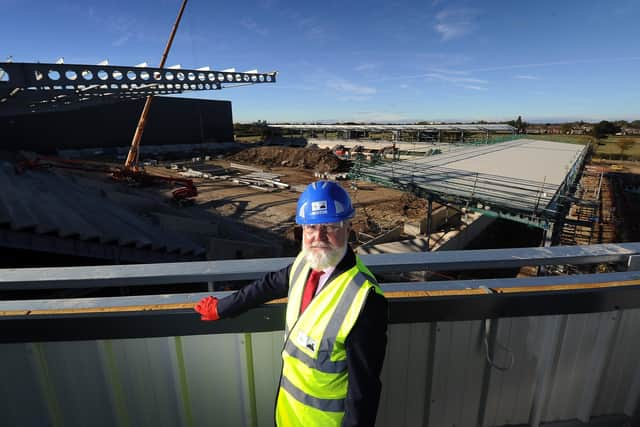

With his crusade over, McGill thinks his involvement is coming to an end, too. He offered to resign as chairman in 2016, but could not find a suitable buyer.
“When we got the £2m loan, I got assurances from the City of York Council the new stadium would be built by 2011 but it was used as a political football,” he says. “It was going to be 2011, then 2015, then 2016. There are only so many battles you can fight. Right up until 2016 certain people didn’t want the stadium to happen for a variety of reasons. It’s debilitating.
Advertisement
Hide AdAdvertisement
Hide Ad“We’re bitterly disappointed it’s taken since 2004. It’s a disgrace. Brighton’s stadium is in an area of natural beauty and they built it in far less time.
“I think my wife would like to spend a bit more quality time with me but I think I deserve to experience the new stadium because I’ve worked bloody hard to get us there.”
The team suffered too and as a result a ground supposed to make York self-sufficient cannot. Crowds of 4,000 to 4,500 are needed to break even.
“The off-pitch stuff took time and sometimes you take your eye off the football,” admits McGill.
Advertisement
Hide AdAdvertisement
Hide Ad“When we got promoted in 2012 and outlying planning permission was granted the same week, we had Football League income. I take the rap for it but in National League North income isn’t the same. Until we get back into the Football League it will be very difficult to be self-sustainable.”
Now, though, there is finally hope for a better future.
Support The Yorkshire Post and become a subscriber today. Your subscription will help us to continue to bring quality news to the people of Yorkshire. In return, you’ll see fewer ads on site, get free access to our app and receive exclusive members-only offers. Click HERE to subscribe.
Comment Guidelines
National World encourages reader discussion on our stories. User feedback, insights and back-and-forth exchanges add a rich layer of context to reporting. Please review our Community Guidelines before commenting.